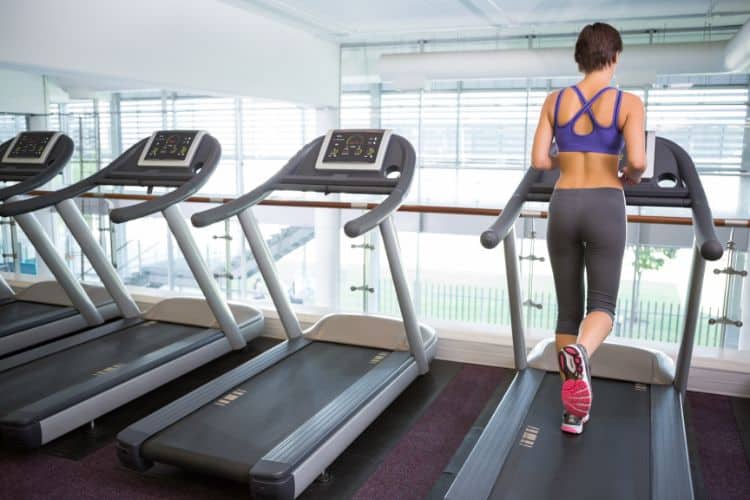30 Minute Chest Isolation Workout for Strength and Definition
If you’re looking to target your chest muscles with precision, a 30-minute chest isolation workout is the perfect solution. While compound lifts like bench presses, push-ups, and dips are essential for overall chest development, isolation exercises help you focus directly on the pectorals, maximizing growth, shape, and muscle definition. Whether you train at home or in the gym, this guide will provide a structured routine, expert tips, and techniques to help you make the most out of your half-hour chest day.
Why Focus on Chest Isolation Workout?
Balanced Muscle Development
Many lifters rely too heavily on compound pressing movements, which often recruit shoulders and triceps as much as the chest. Chest isolation exercises help you activate the pecs more directly, ensuring even development across the muscle group.
Aesthetic Benefits
Isolation workouts allow you to carve out detail in your upper, middle, and lower chest, contributing to a more sculpted physique.
Strength Enhancement
By strengthening the pecs in isolation, you’ll build the muscle endurance and control needed to improve your performance on big lifts like the bench press.
The Structure of a 30-Minute Chest Isolation Workout
This workout is designed with time efficiency in mind. You’ll perform 6 exercises that isolate different areas of the chest. Using moderate weight with strict form is key to ensure the chest—not the shoulders or arms—does the work.
Workout Breakdown:
- Duration: 30 minutes
- Format: 6 exercises, 3 sets each
- Rest: 45–60 seconds between sets
- Equipment: Dumbbells, cables, or resistance bands (alternatives provided)
Warm-Up (5 Minutes)
Before diving into isolation exercises, warming up is crucial to avoid injury and prime the muscles.
- Arm Circles (1 minute) – Forward and backward circles to loosen shoulder joints.
- Push-Up Hold with Chest Stretch (1 minute) – Hold mid-push-up and feel the chest stretch.
- Band Pull-Aparts (2 sets of 15 reps) – Activates upper back and stabilizers.
- Light Dumbbell Chest Fly (2 sets of 12 reps) – Low weight to stimulate pecs.
The 30-Minute Chest Isolation Workout Routine
1. Dumbbell Chest Fly (Flat Bench)
- Target: Middle chest
- How to Perform: Lie flat on a bench holding dumbbells. With a slight bend in the elbows, open arms wide and lower until chest stretches, then bring dumbbells together above chest.
- Sets/Reps: 3 sets of 12–15
- Pro Tip: Keep motion controlled—avoid clanking dumbbells together.
2. Incline Cable Fly Chest Isolation Workout
- Target: Upper chest
- How to Perform: Adjust cables just below shoulder height. With handles in each hand, press arms upward and inward, squeezing chest at the top.
- Sets/Reps: 3 sets of 10–12
- Alternative: Incline dumbbell fly if cables aren’t available.
- Pro Tip: Focus on the squeeze at the top for maximum activation.
3. Pec Deck Machine (or Resistance Band Fly)
- Target: Inner chest
- How to Perform: Sit upright, arms at chest level, and bring handles together until they touch. Slowly return.
- Sets/Reps: 3 sets of 12–15
- Pro Tip: Pause at contraction for a stronger pec squeeze.
4. Low-to-High Cable Fly Chest Isolation Workout
- Target: Upper chest fibers and definition
- How to Perform: Start with cables set low, hands down by hips. Pull arms upward and inward toward chest height, like a scoop.
- Sets/Reps: 3 sets of 12–15
- Pro Tip: Don’t swing weights; control motion for constant tension.
5. Dumbbell Squeeze Press
- Target: Inner chest and stability
- How to Perform: Hold two dumbbells together above chest. Press them up while squeezing together throughout.
- Sets/Reps: 3 sets of 10–12
- Pro Tip: Continuous inward pressure keeps chest activated fully.
6. Cable Crossover (High to Low)
- Target: Lower chest
- How to Perform: Set pulleys high, grab handles, and pull down in an arc across your torso. Cross hands slightly at the bottom.
- Sets/Reps: 3 sets of 12–15
- Alternative: Decline dumbbell fly.
- Pro Tip: Slight forward lean enhances pec stretch and contraction.
Sample 30-Minute Chest Isolation Workout Timeline
- 0:00 – 5:00 → Warm-Up
- 5:00 – 10:00 → Dumbbell Chest Fly
- 10:00 – 15:00 → Incline Cable Fly
- 15:00 – 20:00 → Pec Deck or Band Fly
- 20:00 – 25:00 → Low-to-High Cable Fly
- 25:00 – 28:00 → Dumbbell Squeeze Press
- 28:00 – 30:00 → High-to-Low Cable Crossover
This keeps you moving efficiently without long rest breaks.
Training Tips for Best Chest Isolation Workout Results
The goal is maximum chest contraction, not lifting the heaviest dumbbells. Keep shoulders relaxed and elbows slightly bent.
Maintain Time Under Tension
Slow, controlled reps create constant tension, stimulating muscle growth more effectively than fast, jerky movements.
Focus on the Mind-Muscle Connection
Visualize and feel your pecs working. This enhances activation and prevents secondary muscles from dominating.
Use Progressive Overload
Over time, gradually increase resistance or reps to push chest growth further.
Benefits of a Chest Isolation Workout
- Improved Muscle Symmetry – Helps correct imbalances between left and right chest.
- Greater Definition – Isolation moves bring out striations in the pecs.
- Support for Compound Lifts – Stronger pecs mean stronger bench presses and push-ups.
- Injury Prevention – Balanced chest development reduces strain on shoulders.
Who Should Do This Chest Isolation Workout?
- Beginners – Great for learning chest control before heavy compounds.
- Intermediate Lifters – Perfect for adding definition and balance.
- Advanced Athletes – Use as a finisher after heavy pressing sessions.
- Women – Safe and effective for toning and shaping chest muscles.
Cool Down (3–5 Minutes)
Always finish with light stretches to relax muscles and promote recovery.
- Chest Wall Stretch – Hold 20–30 seconds each side.
- Doorway Pec Stretch – Step through doorway with arms outstretched.
- Foam Rolling – Gently roll upper chest to relieve tension.
Frequently Asked Questions (FAQ) Chest Isolation Workout
1. Can I build a bigger chest with isolation workouts alone?
Isolation workouts build definition and detail but should ideally be combined with compound lifts for maximum size.
2. How often should I do this workout?
2–3 times per week, with at least 48 hours of rest between chest sessions.
3. Can I do this at home?
Yes! Replace cables with resistance bands and use dumbbells or household weights.
4. Is this workout safe for shoulders?
Yes—if performed with proper form and warm-up. Avoid overstretching and keep weights moderate.
A 30-minute chest isolation workout is a time-efficient, effective way to sculpt, strengthen, and define your chest muscles. By strategically using fly variations, cable crossovers, and squeeze presses, you’ll maximize chest activation while minimizing shoulder and triceps involvement. Pair this with a balanced strength routine and proper nutrition, and you’ll see visible improvements in muscle tone and power.
Whether your goal is aesthetic chest definition or improved pressing strength, this workout is your go-to plan for targeted results.
Want more workout and video guide?
Follow us on Pinterest, Facebook, and Subscribe to our Newsletter and Stay tuned for FREE downloads of our App coming soon!
Most Recommended




